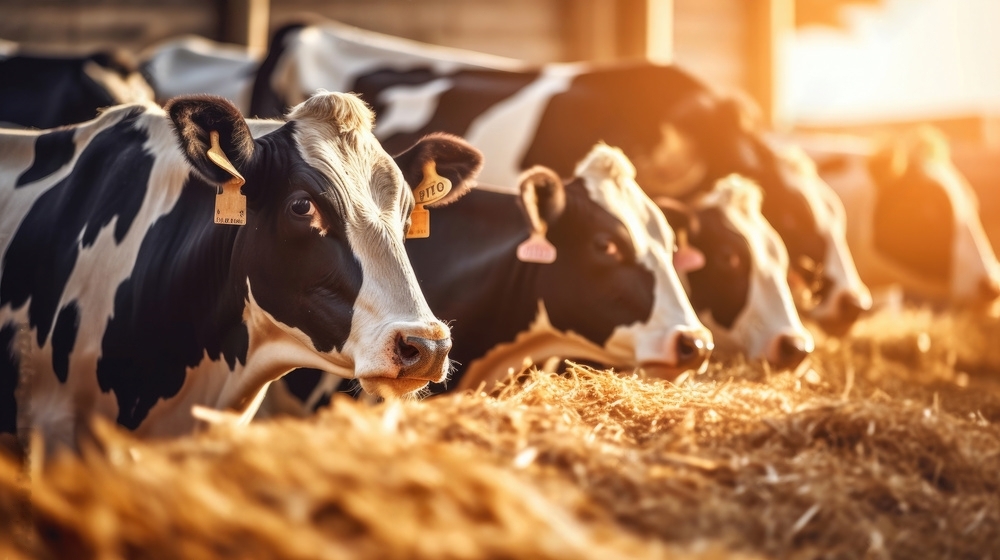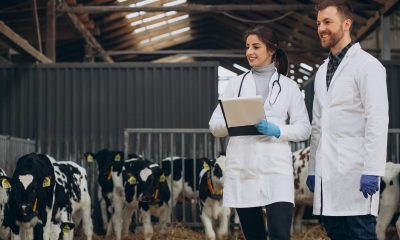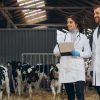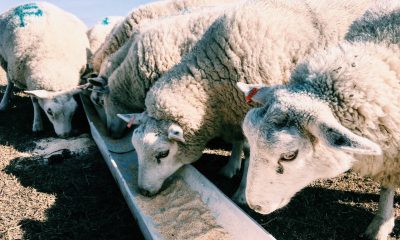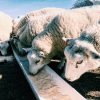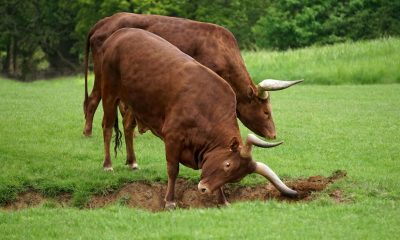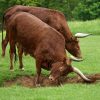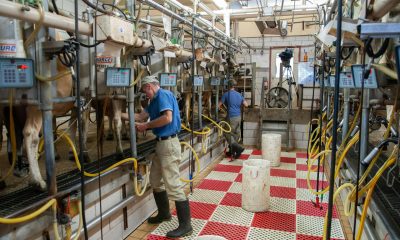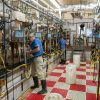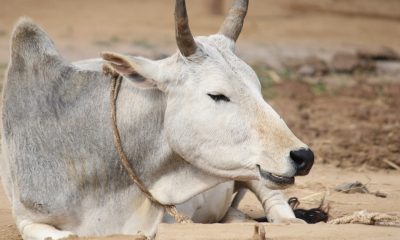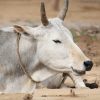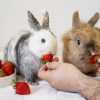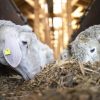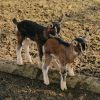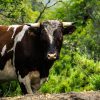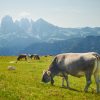Cattle
Artificial Intelligence in Cattle Breeding: Enhancing Genetic Selection
Introduction
Cattle breeding has been a crucial aspect of agriculture for centuries. Traditional cattle breeding methods have been used to improve the quality of cattle and increase their productivity. However, with the advent of technology, there has been a need for advancements in genetic selection to enhance the breeding process. The genetic foundation of cattle holds the key to numerous aspects crucial for farmers and consumers alike—traits such as milk production, meat quality, and disease resistance. As the global demand for high-quality livestock products surges, there is an evident need for a paradigm shift in the way we approach genetic selection. Here, we will discuss the role of genetics in cattle breeding and the need for advancements in genetic selection. We will be looking at how genetic selection in cattle breeding is improved by artificial intelligence.
Importance of Genetic Selection in Cattle Breeding
Genetic selection has a significant impact on herd productivity and profitability. It helps to identify and prioritize commercially relevant traits that meet breeding objectives and market specifications. Genetic traits influencing traits like milk production, meat quality, disease resistance, and feed intake are highly heritable and are readily passed from one generation to the other. By selecting animals with desirable traits, farmers can improve the quality of their herd and increase their productivity.
Farmers can now identify genetically superior animals at a much younger age, which is one of the biggest benefits of genetic selection. With the advent of genomic selection, breeders can use DNA testing to screen a larger group of potentially elite animals and select young, genetically superior males and females. This results in a shorter generation interval, increased genetic merit prediction accuracy for young animals, and an increased intensity of selection. Approximately double the rate of genetic progress for economically significant dairy traits can be achieved by shortening the generation interval, improving selection intensity and accuracy. However, traditional breeding methods have their own set of challenges. For instance, progeny testing was used to identify bulls with high genetic merit before the advent of genomic selection. This method had an accuracy (reliability) of only 30 to 40%. In addition, traditional breeding methods were time-consuming and expensive, and it took several years to determine the genetic merit of an animal. With the advent of genomic selection, breeders can identify genetically superior animals at a much earlier age, resulting in a shorter generation interval and increased accuracy of predicted genetic merit for young animals.
Overview of Artificial Intelligence in Agriculture
Agriculture is one of the most important sectors in the world, and it is constantly evolving. With the advent of technology, the agricultural sector has seen a significant transformation in recent years. One of the most promising technologies that have emerged in the agricultural sector is Artificial Intelligence (AI). The way we run farms, cultivate crops, and produce food could all be drastically altered by artificial intelligence. Here, we will discuss the general applications of AI in agriculture, introduction to precision farming, and data-driven decision-making.
General Applications of AI in Agriculture
Artificial intelligence (AI) has many uses in agriculture. One of the most significant applications of AI in agriculture is crop monitoring. Farmers can get real-time agricultural insights from AI-powered predictive analytics, which will enable them to determine which areas require pesticide treatment, fertilization, or irrigation. Vertical agriculture is one example of an innovative farming technique that can boost food production while using fewer resources. AI can also be used to monitor soil health, weather patterns, and plant growth, providing farmers with valuable insights into the farming process.
Introduction to Precision Farming
Optimising crop yields and minimising waste through technology is the concept of precision farming. Using sensors, drones, and satellites to collect data in real-time about crop health, weather patterns, and soil conditions is known as precision farming. Farmers are empowered to make informed decisions by the insights that AI algorithms extract from this data. Precision farming can help farmers to optimize crop yields, reduce waste, and increase profitability.
Data-Driven Decision-Making
Data-driven decision-making is a critical component of precision farming. Data is everything in the modern world, and companies in the agriculture industry use it to gain deep insights into yield generation processes, from monitoring the entire produce supply chain to comprehending each acre of a field. AI can help farmers make data-driven decisions by providing them with valuable insights into the farming process. Data-driven decision-making can help farmers to optimize crop yields, reduce waste, and increase profitability.
Artificial Intelligence in Cattle Breeding
The agricultural sector depends heavily on cattle breeding, which has advanced significantly in recent years thanks to artificial intelligence (AI). AI has enabled farmers to analyze large datasets related to cattle genetics, use machine learning algorithms for predictive modelling, and leverage genetic markers for AI-driven selection.
Use of AI in Analyzing Large Datasets Related to Cattle Genetics
AI has enabled farmers to analyze large datasets related to cattle genetics, which was previously impossible. Farmers can now analyze data from genomic testing, performance records, and herd history with the help of AI to determine the best mating decisions. This improves breeding efficiency, accelerates genetic gain for desired traits, and increases profitability.
Machine Learning Algorithms for Predictive Modeling
Analyzing data from diverse sources such as weather patterns, soil conditions, and cattle genetics, these algorithms can predict outcomes. For example, predictive models can be used to predict the likelihood of a cow getting sick or the best time to inseminate a cow.
Genetic Markers and Their Role in AI-Driven Selection
Genetic markers are specific DNA sequences that are associated with a particular trait. AI can analyze genetic markers to identify the traits that are most desirable for breeding. This enables farmers to make data-driven decisions when selecting which cattle to breed.
Technologies Used in AI-Driven Genetic Selection
Genetic selection is the process of selecting superior animals for breeding based on their genetic makeup. The goal of genetic selection is to improve the quality of the offspring and increase the profitability of the breeding program. In recent years, artificial intelligence (AI) has been used to improve the accuracy and efficiency of genetic selection. Here are some of the technologies used in AI-driven genetic selection:
DNA sequencing and genotyping technologies:
The process of ascertaining the sequence of nucleotides in a DNA molecule is known as DNA sequencing. Genotyping, on the other hand, involves analyzing an individual’s DNA to determine their genetic composition. These technologies are used to identify genetic variations that are associated with desirable traits in animals.
Data collection methods in cattle breeding:
Data collection is an important part of genetic selection. The data collected includes information about the animal’s pedigree, performance, and genetic makeup. This data is utilized to recognize animals that are prone to yield offspring exhibiting favorable characteristics.
Integration of AI with other technologies (e.g., IoT devices):
Integrating AI with technologies like Internet of Things (IoT) devices enhances the precision and efficiency of genetic selection. For example, sensors can be used to collect data about an animal’s behaviour, which can be used to predict its performance and genetic makeup.
AI-driven genetic selection has the potential to revolutionize the breeding industry by improving the accuracy and efficiency of genetic selection. However, it is important to ensure that the use of AI is ethical and does not harm the animals involved in the breeding program.
Benefits of AI in Cattle Genetic Selection
AI in cattle genetic selection offers unparalleled accuracy, faster progress, and improved herd health. Technology’s ongoing evolution maintains its crucial role in shaping the future of livestock breeding.
Improved Accuracy in Identifying Desirable Genetic Traits
Artificial Intelligence (AI) has revolutionized cattle breeding by enhancing the precision of genetic trait identification. Traditional methods relied on manual observation and pedigree records, which were prone to errors and subjectivity. With AI, sophisticated algorithms analyze vast datasets, including genomic information, phenotypic traits, and historical breeding records. By pinpointing specific genes associated with desirable traits (such as milk production, meat quality, or disease resistance), AI enables more accurate selection of superior breeding candidates. This precision minimizes the risk of unintentionally propagating undesirable traits and maximizes the transmission of valuable genetic material.
Accelerated Breeding Progress
AI expedites the breeding process by reducing generation intervals. Traditionally, it took years to evaluate the performance of a bull or cow and assess their genetic potential. AI allows for quicker assessments, as it predicts an animal’s breeding value early in life based on genomic markers. By identifying promising individuals sooner, breeders can make informed decisions about mating pairs, leading to faster genetic progress. This acceleration benefits both commercial cattle production and specialized breeding programs.
Enhanced Disease Resistance and Overall Health
AI contributes to healthier cattle populations by identifying genetic markers associated with disease resistance and robust health. By analyzing genomic data, AI can identify animals with inherent immunity to specific diseases or resilience to environmental stressors. Breeding these resilient animals together increases the likelihood of offspring inheriting these advantageous traits. Additionally, AI assists in managing inbreeding, reducing the risk of genetic disorders. Overall, healthier cattle contribute to sustainable and profitable livestock production.
Challenges and Ethical Considerations in AI-Assisted Cattle Breeding
As AI continues to revolutionize cattle breeding, we must navigate the challenges with care. Balancing technological advancements with ethical considerations ensures a sustainable and compassionate approach to improving livestock farming. Also, ethical choices today shape the future of our cattle and the environment they inhabit. Some challenges and ethical considerations are mentioned below.
Addressing Potential Drawbacks
1. Technical Limitations of Precision Livestock Farming (PLF) Technologies
Precision Livestock Farming involves real-time monitoring of farmed animals using technologies like cameras, sensors, and sound devices, often powered by artificial intelligence. While PLF offers promising solutions for sustainable livestock farming, it faces technical challenges. Validation of PLF technologies is crucial to ensure they meet targets under realistic operating conditions. This validation should occur across diverse environments and conditions.
2. Data Privacy and Security
AI-driven systems collect and process sensitive data about cattle health, reproduction, and genetics. Strong data privacy and security measures must be in place to stop this information from being misused or accessed without authorization.
3. Bias and Fairness
Machine learning algorithms can inherit biases from training data. In cattle breeding, biased algorithms may favor certain breeds or traits, leading to unintended consequences. Addressing bias and ensuring fairness in AI models is critical.
Ethical Concerns Related to Genetic Manipulation and AI Use
1. Genetic Modification
Gene editing and genetic engineering allow direct manipulation of an organism’s genetic makeup. In cattle breeding, these techniques raise ethical questions:
Animal Welfare: How do genetic modifications impact cattle health and well-being?
Environmental Impact: What are the ecological consequences of introducing genetically modified cattle into ecosystems?
Genetic Diversity: Does genetic manipulation reduce diversity, making cattle more vulnerable to diseases?
2. Community Engagement and Consent
When implementing AI and genetic technologies, involving local communities, farmers, and stakeholders is crucial. Transparent communication and obtaining informed consent are ethical imperatives.
3. Decision-Making and Policy
Who decides which genetic modifications are acceptable? Policymakers, scientists, and the public must engage in ethical discussions about the boundaries of genetic manipulation.
Future Trends in AI-Enhanced Cattle Breeding
As technology continues to evolve, so does the field of cattle breeding. The future of livestock management is significantly influenced by the pivotal role played by artificial intelligence (AI). Let’s delve into the ongoing research and emerging technologies, along with predictions for the future of AI in cattle breeding.
Ongoing Research and Emerging Technologies
1.Genomic Selection
- What is it? Genomic selection involves analyzing an animal’s DNA to predict its genetic potential. By examining specific markers, scientists can identify desirable traits.
- Why is it important? Genomic selection allows breeders to make informed decisions early in an animal’s life, improving breeding efficiency and accelerating genetic progress.
- Impact: Expect further advancements in genomic prediction models, leading to more accurate trait predictions.
2. Machine Learning Algorithms
- What are they? Machine learning algorithms examine vast datasets to discern patterns and generate predictions.
- Application: These algorithms can predict an animal’s performance based on historical data, health records, and environmental factors.
- Potential: As AI algorithms become more sophisticated, we’ll see better disease prediction, feed efficiency optimization, and overall herd management.
3.Automated Reproductive Technologies
- Advancements: AI and embryo transfer techniques have already transformed cattle breeding. Expect further automation and refinement.
- Sexed Semen: Pre-determining a calf’s sex before conception using sperm sexing technology.
- Embryo Flushing and Transfer: Enhancing genetic diversity through efficient embryo transfer.
Predictions for the Future
1.Customized Breeding Programs
- Personalized Traits: AI will enable customized breeding programs tailored to specific farm goals. Whether it’s disease resistance, milk production, or beef quality, breeders can fine-tune their selections.
- Precision Breeding: Expect precision breeding based on individual animal genomics.
2. Health Monitoring and Predictive Analytics
- Real-time Monitoring: AI-powered sensors will continuously monitor cattle health, detecting early signs of illness.
- Predictive Models: Algorithms will predict disease outbreaks, optimize treatment, and minimize losses.
3.Ethical Considerations
- Balancing Progress and Welfare: As AI adoption grows, ethical discussions will intensify. Breeders must consider animal welfare, environmental impact, and community engagement.
- Transparency: Open communication about AI use and genetic modifications is essential.
Conclusion
The integration of Artificial Intelligence (AI) in cattle breeding holds immense potential for transforming traditional practices and elevating the efficiency and precision of genetic selection. This blog has highlighted the crucial role of genetic selection in improving herd productivity and profitability, emphasizing how AI-driven advancements, such as genomic selection and machine learning algorithms, contribute to quicker and more accurate decision-making. The benefits of AI in cattle breeding include improved accuracy in identifying desirable genetic traits, accelerated breeding progress, and enhanced disease resistance. However, ethical considerations and challenges, such as data privacy, bias, and genetic manipulation, must be carefully navigated as ongoing research explores genomic selection, machine learning algorithms, and automated reproductive technologies. The future of AI-enhanced cattle breeding promises customized breeding programs, precision breeding, and advanced health monitoring. Ultimately, the potential for AI to revolutionize cattle breeding practices underscores the importance of responsible and ethical implementation for the benefit of both livestock and the environment.



